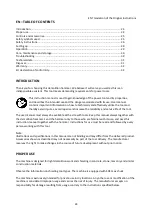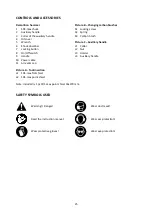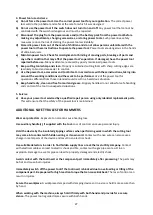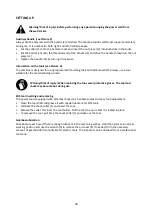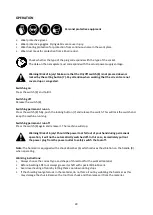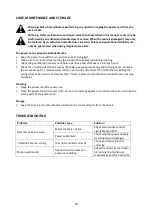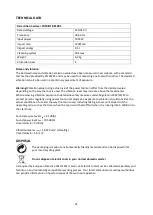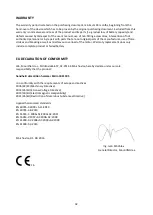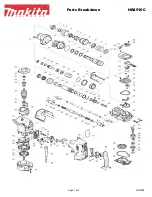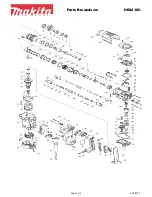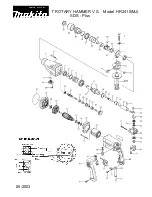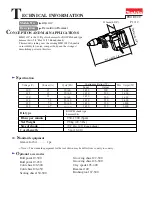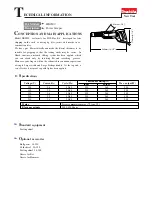
4. Power tool use and care
a)
Do not force the power tool. Use the correct power tool for your application.
The correct power
tool will do the job better and safer at the rate for which it was designed.
b)
Do not use the power tool if the switch does not turn it on and off.
Any power tool that cannot be
controlled with the switch is dangerous and must be repaired.
c)
Disconnect the plug from the power source and/or the battery pack from the power tool before
making any adjustments, changing accessories, or storing power tools.
Such preventive safety
measures reduce the risk of starting the power tool accidentally.
d)
Store idle power tools out of the reach of children and do not allow persons unfamiliar with the
power tool or these instructions to operate the power tool.
Power tools are dangerous in the hands
of untrained users.
e)
Maintain power tools. Check for misalignment or binding of moving parts, breakage of parts and
any other condition that may affect the power tool’s operation. If damaged, have the power tool
repaired before use.
Many accidents are caused by poorly maintained power tools.
f)
Keep cutting tools sharp and clean.
Properly maintained cutting tools with sharp cutting edges are
less likely to bind and are easier to control.
g)
Use the power tool, accessories and tool bits etc. in accordance with these instructions, taking into
account the working conditions and the work to be performed.
Use of the power tool for
operations different from those intended could result in
a hazardous situation.
h)
Keep handle dry, clean and free from oil and grease.
Slippery handles do not allow for safe handling
and control of the tool in unexpected situations.
5. Service
a)
Have your power tool serviced by a qualified repair person using only
identical replacement parts.
This will ensure that the safety of the power tool is maintained.
ADDITIONAL SAFETY RULES FOR
HAMMERS
Wear ear protectors.
Exposure to noise can cause hearing loss.
Use auxiliary handle(s), if supplied with the tool.
Loss of control can cause personal injury.
Hold the device by the insulated
gripping surfaces when performing
work in which the cutting
tool
may come into contact with
hidden wiring or its own cord.
Contact with a live wire can also cause a
charge in metal parts of the device and result in an electric shock.
Use suitable detectors in order to
find hidden supply lines or ask
the local utility company.
Contact
with electrical cables can lead to electric shock and fire, contact with a gas pipe can result in an
explosion. Damage to a water pipe can lead to property damaged and electric shock.
Avoid contact with the tool insert
or the component part immediately
after processing.
The parts may
be hot and cause burn injuries.
Immediately switch off the
power tool if the tool insert is
blocked due to overloading or
tilting of the
component part.
Be prepared for high reaction torque that
can cause kickback.
The loss of control can
result in injuries.
Secure the workpiece.
A workpiece clamped with clamping devices or in
a vice is held more secure than
by hand.
When working with the machine, always hold it firmly with both hands and provide for a secure
stance.
The
power tool is guided more secure with both hands.
27












